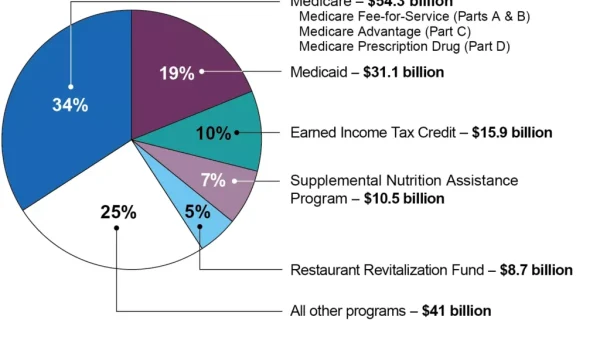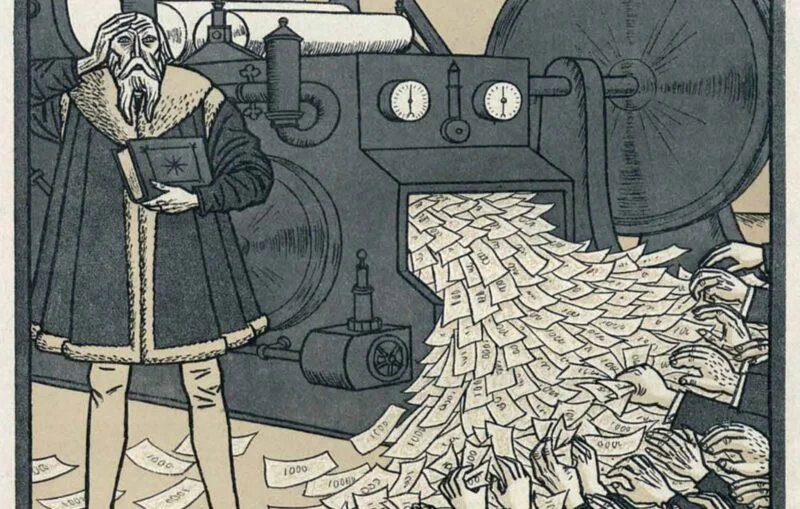In We Need to Talk About Inflation, his thoughtful, accessible tour of the history, theories, politics and future of inflation, Stephen King warns us that:
“Inflation is never dead.”
He is right about that, and that blunt reminder alone justifies the book.
The book begins, “In 2021, inflation emerged from a multi-decade hibernation.” Well, inflation had not really been in hibernation, but rather was continuing at a rate which had become considered acceptable. It was worry about inflation that had been hibernating. People found themselves caught up in the runaway inflation of 2021-2023, a wake-up call. As the book explores at length, that explosive inflation had been unexpected by the central banks, including the Federal Reserve, making their forecasts and assurances look particularly bad and proving once again that their knowledge of the future is as poor as everybody else’s.
Now, in the third quarter of 2024, after historically fast hikes in interest rates, the current rate of inflation is less. But average prices continue going up, so the dollar’s purchasing power, lost to that runaway inflation, is gone forever. Inflation continues and has continued to exceed the Fed’s 2-percent “target” rate. And the Fed’s target itself is odd: it promises to create inflation forever. The math of 2-percent compound shrinkage demonstrates that the Fed wants to depreciate the dollar’s purchasing power by 80 percent in each average lifetime. Somehow the Fed never mentions this.
King shows us that such long-term disappearance of purchasing power has happened historically. Chapter 2, “A History of Inflation, Money and Ideas,” has a good discussion, starting with the debate between John Locke and Isaac Newton, of the history, variations and continuing relevance of the quantity theory of money. It also contains an instructive table of the value of the British pound by century from 1300 to 2000. The champion century for depreciation of the pound was the twentieth. The pound began as the dominant global currency and ended it as an also-ran, while one pound of 1900 had shriveled in value to two pence by 2000. The century included the Great Inflation of the 1970s, during which British Prime Minister Harold Wilson announced, the book relates, that “he hoped to bring inflation down to 10 percent by the end of 1975 and under 10 percent by the end of 1976.” His hopes were disappointed, as King sardonically reports: “The actual numbers turned out to be, respectively, 24.9 percent and 15.1 percent.”
These inflationary times need to be remembered, as should numerous hyperinflations. Best known is the German hyperinflation of 1921-23, the memory of which gave rise to the famous anti-inflationist regime of the old Bundesbank. (It was once wittily said that “Not all Germans believe in God, but they all believe in the Bundesbank” — however, this does not apply to its successor, the European Central Bank.) King also recounts that the effects of the First World War gave rise to three other big 1920s hyperinflations — in Austria, Hungary and Poland, and that “inflation in the fledging Soviet Union appears to have been stratospheric.” He discusses the 1940s hyperinflation in China, and how in the 1980s “Brazil and other Latin American economies…succumbed to hyperinflation, currency collapse and, eventually, default.” We must add the inflationary disasters of Argentina and Zimbabwe.
All these destructive events resulted from the actions of governments and their central banks. The book considers the theory of how to put a stop to this problem that Nobel Prize-winning economist Thomas Sargent made in 1982. First and foremost, as described by King, it is “the creation of an independent central bank ‘legally committed to refuse the government’s demand for additional unsecured credit’ — in other words, there was to be no deficit financing via the printing of money.” Good idea, but how likely is this suggested scene in real life? The central bank says to the government, “Sorry about your request, but we’re not buying a penny of your debt with money we create. Of course, we could do it, but we won’t, so cut your expenses. Good luck!” Probably not a winning career move for a politically appointed central banker, and not a very likely response, we’ll all agree.
Moreover, in time of war or other national emergency, the likelihood of this response is zero. War is the greatest source of money printing and inflation. War and central banking go way back together: the Bank of England was created in 1694 to finance King William’s wars, was a key prop of Great Britain’s subsequent imperial career, and in 1914, fraudulently supported the first bond issue of the war by His Majesty’s Treasury.i The Federal Reserve was the willing servant of the U.S. Treasury in both world wars and would be again, whenever needed. In the massive war-like government deficit financing of the 2020-2021 Covid crisis, the Fed cooperatively bought trillions in Treasury debt to finance the costs of governments’ closing down large segments of the economy.
Reflecting on the enduring temptation of governments to inflate and depreciate their currencies, King rightly observes:
“Inflation is very much a political process.”
“Left to their own devices, governments cannot help but be tempted by inflation.”
“Governments can and will resort to inflation.”
“By a continuing process of inflation, governments can confiscate, secretly and unobserved, an important part of the wealth of their citizens.” (Here he is quoting J.M. Keynes.)
Just as economics is always political economics and finance is always political finance, central banking cannot avoid being political central banking. The book considers at length the inevitable interaction between government spending and debt, on one hand, and money creation and inflation, on the other—in economics lingo, between fiscal policy and monetary policy. In theory, there can be a firm barrier between them, the spending and taxing done in the legislative and executive branches; and the money printing, or not, in the control of the central bank. In practice, the two keep meeting and being intertwined. King calls this the “Burton-Taylor” problem. Here is his metaphor:
“History offers countless examples in which fiscal expediency trumps monetary stability. The two big macroeconomic levers are the economic equivalent of Elizabeth Taylor and Richard Burton, the Hollywood stars who were married twice [and divorced twice] and who were, perhaps still in love when Burton died: occasionally separated but always destined to reconnect.”
Indeed, governments’ desire for deficit spending and the ready tool of money printing and inflation are always destined to reconnect.
This reflects the fundamental dilemma of all politicians: they naturally want to spend more money than they’ve got to carry out their schemes, including wars. As the book observes, “Wartime provides the ultimate proof of inflation’s useful role as a hidden tax.” Politicians want to keep their perhaps lavish promises to their constituencies, to reward their friends, to enhance their power, to get re-elected; they like much less making people unhappy by taxing them. The simple answer in every short term, is to borrow to finance the deficit and run up the government’s debt. When borrowing grows expensive or becomes unavailable, the idea of just printing up the money inevitably arises, the central bank is called upon, and yet another Burton-Taylor marriage occurs.
Just printing up the desired money is a very old idea. As the book discusses, this frequently practiced, often disastrous old idea has been promoted anew—now under the silly name of “Modern” Monetary Theory.
King writes:
“The printing press is a temptation [I would say an inevitable temptation] precisely because it is an alternative to tax increases or spending cuts, a stealthy way in the short run of robbing people of their savings…. Ultimately, there is no escaping ‘Burton-Taylor.’”
When governments and central banks yield to this temptation, can the central banks correctly anticipate the inflationary outcomes? Do they have the required superior knowledge? Clearly the answer is no.
Chapter 6 of the book, “Four Inflationary Tests,” provides an instructive example of failed Bank of England inflation forecasts, to which I have added the actual outcomes, with the following resultsii:
Forecast MadeCurrent InflationOne Year AheadTwo Years Ahead(quarter)(estimated)ForecastActualForecastActual3Q 20200.30%1.8%2.8%2.0%10%4Q 20200.62.14.9210.71Q 20210.82.16.22.110.22Q 20211.72.39.228.4
To apply an American metaphor to these British results, that is four strikeouts in a row. The inflation forecasting record of the Federal Reserve presents similar failures.
Central banks try hard, including their large political and public relations efforts, to build up their credibility. They want to preside over a monetary system in which everybody believes in them.
But suppose that everybody, including the members of Congress, instead of believing, developed a realistic understanding of central banks’ essential and unavoidable limitations. Suppose everybody simply assumed it is impossible for central banks to know the future or the future results of their own actions. Suppose, as King puts it, the whole society had “a new rule of thumb… ‘these central bankers don’t know what they’re doing.’” Rational expectations would then reflect this assumption.
In that case, central banks would certainly be less prestigious. Would our overall monetary system be improved? I believe it would be. We Need to Talk About Inflation, among many other interesting ideas, encourages us to imagine such a scenario.
























